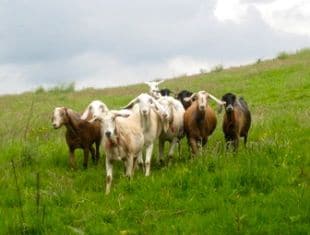Pet Advice Guides for Pet Owners
Goat keeping – A Guide to Looking After Goats
There are many different ways to keep these gentle, versatile and friendly animals. It all depends on whether you want a milking goat, a pet goat, a kid to rear or maybe you would like to give a ‘golden oldie’ goat a good home. Goats are not as tough as you would think so understanding their requirements is essential. Horses and cattle can go out to graze at any time but if a goat eats wet grass without a hay feed first you might be calling the vet. They soon get digestive upsets and eating lush grass is one of the main causes. There is plenty to learn in the initial stages but once you know the ground rules, goatkeeping can be as easy or as complex as you like. It’s also quite addictive – a lot of people have begun with one goat and finished up with a herd of twenty! If you are not used to goats you may be surprised at how sensitive, loving and companionable they are.
Of course there is a down side – goats are also quick, intelligent, determined and perverse with a quirky and even contrary disposition – hence ‘acting the goat’ – which I suppose means behaving in a comical and unusual way. Goats are the ultimate escape artists and only the most effective fencing will keep them in. Keeping them away from the pub, the graveyard or your neighbour’s prize vegetable patch is something you will have to learn to do.
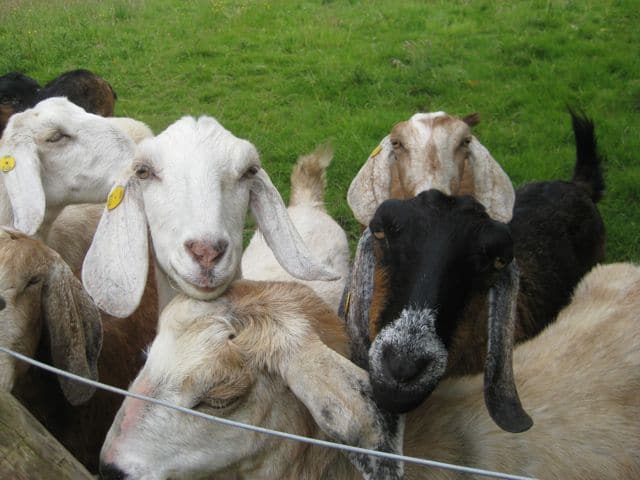
Pet Goats – It would be most unkind to keep a goat on her own, they are herd animals and want company. They are picky about their friends and have special favourites, they love their own relatives best of all and mother and daughter will be devoted to each other for all their life. Getting two goats from the same place is the best idea, ask first if they get on well. If you are keeping a goat as a pet you will not want a milker, so don’t buy one that is in kid. When she kids it could well be that she suckles her kids and then you will have two or three extra pets! Sometimes things go wrong and if you don’t get a kid suckling from each teat you will have to milk the mother, so that is twice a day for many months, until the winter when her milk dries up.
Maiden milkers – A couple of goatlings would be fine or an older pair of related goats or good friends will make lovely caprine companions. If you don’t put them in kid you will not have the problem of milking them. There is an exception though and if you buy goats from a top milking herd you might find that your maiden goats develop udders and start to produce milk even though they haven’t been mated. They’ve been bred to be high yielding milkers. If you don’t milk them they’ll get mastitis, so a couple of ‘ordinary’ goats or old stagers might be best.
Male kids – These can make great goat pets -if they have been disbudded, de-musked and castrated. Poor goats! That’s what we do to them. Unfortunately there isn’t an alternative except in the wild where they would ultimately (at maturity) fight to the death with each other – there can only ever be one alpha male in a herd. Goats nearly always have more male kids than female so there is a surplus and homes are nearly always wanted. If the male kid is from a purebred line of heavy milkers he might be lucky enough to be selected for stud duties and then will have a cosseted life. Some people have their male kids put to sleep when they are born, others rear them for a summer and then eat them. Goats are important for survival of most of the people in the Third World.
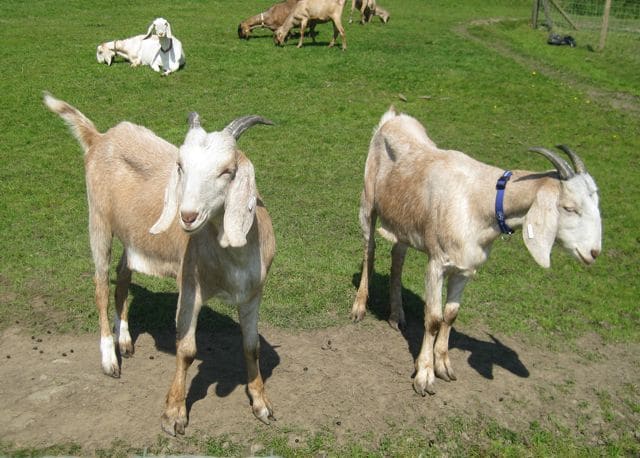
This is male kid who has been kept for stud. Others will be neutered at a very early age. If your goat has male kids and you aren’t sure what you’re going to do with them, it’s best to ask your vet for advice. He will neuter the kids for you and they will grow up without any of the ‘hang-ups’ that an entire male goat has. Experience is necessary to make sure that a stud male remains easy to handle, once an adult goat has become a bit bolshie, he will always be the same. They are agile, strong and determined with one thought in mind – to get to the girls – so they do need special housing and management and that’s another subject for another day.
Neutered kids will be good tempered and friendly. They do need to be disbudded, which is when their horns buds are removed. This stops the horn from growing and goats without horns are much easier to handle. It only takes a minute or two to disbud a kid, the vet has a special disbudding iron which flicks the horn bud off – job done. If he runs the tool over the scent gland, which is behind the horn in a male goat, he will be de-musked as well. While female goats do not smell at all, the males have a very distinct aroma when they reach maturity. It’s a musky scent and impossible to get rid of – I once fetched a stud male in the back of my husband’s car and after trying everything to get rid of the smell we had to trade it in. He wasn’t happy!
Stick to females or get the males de-musked and there won’t be a problem.
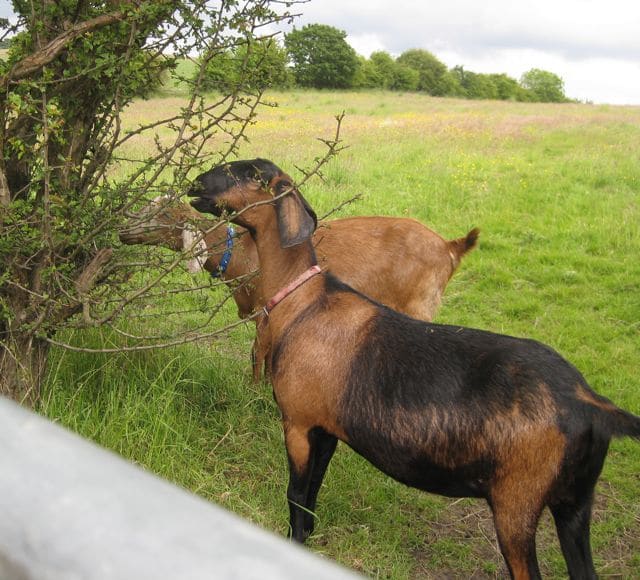
This is what you get if you don’t disbud and goats with horns are often bullies with each other, so it’s better to have it done in a domestic situation. For goats living wild on a mountain, horns are obviously an advantage.
Milking goats – and the advantage is that you won’t have to buy milk any more. Goats milk is good for you and that’s a fact. I’ve been drinking goats milk all my life, I love it and it is a health giving food. Children and old people benefit from it and it is specially good for anyone suffering from asthma and/or eczma. It’s pure and fresh and there are no additives. It’s also economical to produce your own milk, an average goat will give several pints a day – a good milker gives over a gallon.
A milking goat is harder to care for though, she has already produced kids and now she is using her bodily reserves to make milk. She needs careful feeding, a mineral rich and preferably natural diet and careful attention when she is milked. It’s not that it’s so difficult once you get to know what you’re doing but a bit of experience with goat keeping first is a definite advantage.
Golden Oldie Goats – or middle aged would be the best option for a beginner. If they are mature they will teach you all you need to know about goatkeeping and, hopefully, be fairly steady and laid back too. They’ll get out and you’ll learn how to get them back and keep them in. They’ll show you what they like to eat and you’ll be fetching armfuls of branches for them come rain or shine. Feeding, feet trimming, worming, buying the special hay that goats love best – in no time you’ll be a goat keeper and you’ll love it!
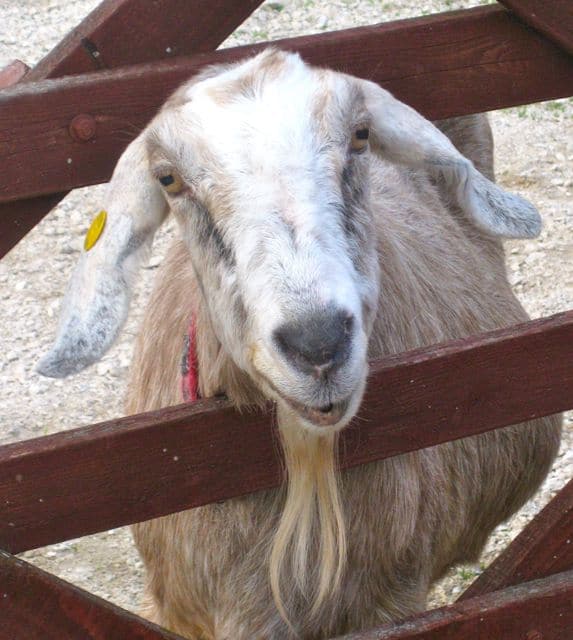
If you have enjoyed this article, please consider a donation to the animals and help support our animal sanctuary and wildlife rescue centre.


